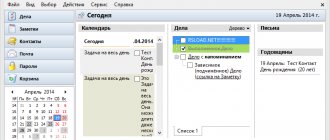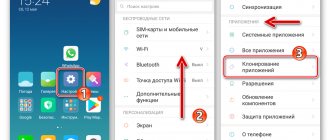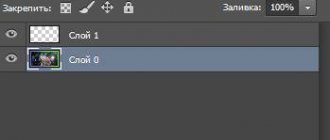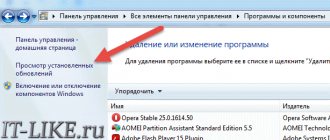| Category: | Programs |
| Operating system: | Windows 7, Windows 8/8.1, Windows 10 |
| Russian language: | There is |
| Price: | For free |
Parallel Space is a unique service for easily cloning applications installed on your device. Modern users are often faced with the need to run the same application, but from multiple accounts. Often this need is due to the fact that some people have both work and everyday accounts on social networks and various instant messengers. Many modern smartphones have acquired support for two SIM cards, which allows you to register several accounts at once in the same Viber or Telegram. Simultaneous use of accounts is impossible without the use of additional programs. Modern services that allow you to clone applications on your device make the process of switching between accounts as simple and fast as possible. If you also feel the need to simultaneously maintain multiple accounts, then be sure to pay attention to the detailed guide on downloading Parallel Space to your computer.
Before the advent of services such as Parallel Space, users were forced to constantly log out of their account and switch to the desired account. Some inventive people tried to log in through one account in the application itself, and use another account in the browser. But situations often arose when some projects simply did not have a website that would present all the necessary functions of the service. All these compromises and all sorts of additional manipulations take time, and their convenience is not even worth talking about. The process of cloning applications has become a real salvation for all users who have multiple accounts in the same specific service.
If you look at the profile of the LBE Tech studio on the Play Market, you will see that Parallel Space is their main creation. The developer has been improving and expanding the functionality of its main product for a long time. At the moment, six independent versions of the project in question have already been released, each of which is optimized for different technical characteristics of devices. The most experienced people will pay attention to the pro versions, but there are also light versions that provide a minimum of functionality. Each user can choose a version of the service to their liking.
1.1. Types of AR
There are usually four types of augmented reality considered:
- marker-based
- markerless,
- projection-based
- based on superposition (superimposition-based).
In marker-based AR
a specific template is required, a marker, for example, a QR code, on top of which a virtual object is superimposed.
Rice.
1. Marker AR As the name suggests, for markerless
application marker is not needed. A mesh is overlaid on the environment and key points are detected to which the virtual model is snapped.
Rice.
2. Markerless AR Projection-based AR
designed to make factories smarter, safer and more efficient. The projector eliminates the need for paper instructions by creating a digital layer on virtually any work surface.
Projection-based AR
Superimposition-based AR
partially or completely replaces the original representation of an object with an augmented representation of the same object.
Rice. 3. Superimposition-based AR
Advantages and disadvantages of the application
The project under consideration can boast a huge number of advantages, among which are:
- intuitive interface with the ability to disable all advertising;
- the virtual environment works quite stably on devices that were current for its time;
- the ability to set a password for any of the added programs;
- quickly switch between two similar applications;
- After subscribing, you will be able to access even more functionality of the service.
Nothing in life is perfect, and here there are some shortcomings:
- launching a virtual environment greatly slows down the system;
- disabling advertising is available only for real money;
- There are some nuances with adding programs to whitelists and ensuring all necessary permissions.
1.2. Software for AR
To create an augmented reality application, you will need a software development kit (SDK). Below we have reviewed the most popular SDKs.
ARKit
ARKit is an SDK for creating augmented reality apps and games for iPhone and iPad. It is characterized by the following features:
- Robust face tracking - easily apply facial effects or create facial expressions.
- Monitoring the level of illumination of the environment for the correct setting of the light environment of virtual objects.
- Detection of 2D objects: horizontal, vertical and inclined planes. That is, for example, tables and walls.
- Integration with Unity and Unreal Engine.
Reality Composer
– editor for creating 3D models.
RealityKit
– rendering and animation.
Supported platforms: iOS 11.0 and higher.
Price
: for free.
ARCore
Google responded to ARKit with its development – ARCore.
- ARCore uses the phone's camera to identify function points and change their position over time. Visual information is combined with data received from sensors to calculate the position and orientation of the phone in space.
- Detects flat and inclined surfaces.
- Automatic light control. For example, if you are in a dimly lit room, ARCore will automatically adjust the image.
- Linking virtual objects (kitten) to physical objects (table). If you leave the room and return, the kitten will remain in the same place.
- Integration with Unity and Unreal Engine.
Supported platforms: Android 7.0 and above, iOS 11 and above.
Price
: for free.
Vuforia
Official site. Peculiarities:
- Recognition of text and various types of visual objects (box, cylinder, plane).
- Supports the creation of marker and markerless ARs.
- 3D scanning of the environment.
- Detection of multiple objects.
- Simulation Play mode, which allows you to walk through or around a 3D model and watch it on your computer.
- API: C# for Unity, C++ for iOS, Java for Android.
Supported platforms: Android 4.4.4 and above, iOS 11 and above.
Price
: from 99$/month.
EasyAR
Official site. Characteristics:
- Scan the environment and generate a 3D mesh in real time.
- Compatible with Android smartphones that ARCore does not support.
- Tracking 3D objects.
- Real-time recognition and tracking of flat images.
- Screen recording in H.264/AAC/MP4 formats.
- Unity integration.
Supported platforms: Android, iOS.
Price
: for free.
Lens Studio
Official site. Possibilities:
- Tracking face, neck, elbows, hands.
- Changing hair color and applying masks to faces.
- Delayed publication of “lenses”.
- Create 3D models without writing code in the Material Editor.
Supported platforms: Snapchat.
Price
: for free
Spark AR
Official site. Functions:
- Making masks for Instagram.
- Color filters.
- Tracking of face and body parts.
Supported platforms: Instagram.
Price
: for free
Virtual reality is a computer simulation of an alternative reality.
2.1. Types of VR
Standalone VR
works on its own, without the need for additional external equipment (computer, console), for example, Oculus Quest. All you need is a headset and VR controllers.
Oculus Quest
PC based VR
– these are any headsets that require a constant connection to a PC, such as: PC Oculus Rift S, Valve Index, HTC Vive, Pimax and Windows Mixed Reality.
HTC Vive
When they talk about VR for a console
, usually referring to PlayStation VR for PlayStation 4.
Rice. 4. PlayStation VR
2.2. Types of motion tracking
The most common way to track movements is the Inside-Out
with cameras built into the headset. This approach is implemented in the Oculus Rift S, HTC Vive Cosmos and all Windows Mixed Reality headsets.
There is also an Outside-In
with base stations placed in the corners of the room to help the headset and controllers track their exact location (HTC Vive Cosmos Elite, Valve Index).
Rice.
5. Outside-In and Inside-Out Tracking Advanced headsets use simultaneous localization and mapping (SLAM) to track features of the physical environment around a person.
Example of how SLAM works
Application features on PC
Parallel Space for Windows is a virtual environment that is individual for each device. Here you do not have to register your account to discover all the functionality of the service. The interface here is quite convenient, but the workspace itself will be surrounded by numerous news, advertising and other rubbish, which only blurs the overall impression. It’s worth saying right away that here you can sign up for a subscription, which will remove absolutely all advertising and provide access to all the offered functions and options. The subscription price is low, and its nature is unlimited.
The main workspace is a window into which you can add applications installed on your device. It is noteworthy that you can even add system applications that are built into the Android operating system. To add an application, just click on the corresponding button and select the required object from the list. After this, you can launch the selected application or game and log in with any account.
For the correct operation of all selected services, a number of subtleties must be observed. Among them are adding programs to the white list, ensuring all necessary permissions, etc. Unfortunately, such subtleties are quite individual, and sometimes you will spend a long time resolving problems with the performance of a particular program running in Parallel Space.
The project under consideration will be ideal for those users who have work and everyday accounts. Gamers who find various loopholes to obtain additional in-game benefits will not ignore it either. Those who prefer to hide the applications they use will also feel useful. Here you can set a password to enter, which will protect all your personal information.
There is no special donation here, only a subscription will be available to you for real money. It is worth noting that if you do not want to buy a subscription, you can separately purchase advertising disabling, which will also increase ease of use.
2.3. Basic terms and concepts
Field of View (FOV)
. In the context of VR headsets, field of view refers to everything you can see in the virtual world while using the headset.
Rice.
6. Field of view (FOV) Degrees of freedom (DoF)
. The more degrees of freedom, the more physical movements the headset will track. 3DoF (3 degrees of freedom) tracks only head movement: roll, pitch, yaw, but not position in space along coordinates (x, y, z). Modern headsets use 6DoF, which tracks both head movements and head coordinates.
Rice.
7. Degrees of freedom 3DoF and 6DoF Frames Per Second (FPS)
– number of frames per second.
Screen Resolution
– the number of pixels displayed on the screen.
Spatial Audio (3D audio)
– spatial sound (used to create sound that comes from a specific point in the virtual world).
Rice. 8. Spatial Audio (3D audio)
We create copies of applications on an Android device: Parallel Space, App Cloner and GO Multiple
Table of contents
- Introduction
- Parallel Space
- Acquaintance
- Beginning of work
- Settings
- Testing
- conclusions
- Acquaintance
- Beginning of work
- Settings
- Testing
- conclusions
- Acquaintance
- Beginning of work
- Settings
- Testing
- conclusions
Introduction
In the modern world, many are trying to embrace the immensity and get as many advantages as possible through the most ordinary things.
For example, some users create several accounts in social services or games, and some do not hesitate to “clone” themselves in the same WhatsApp. But how can we make sure that there is no need to log in to the application every time? Especially for this, there are various kinds of utilities that allow you to create local copies of games and programs without being tied to our old (mainly used) account. Interesting?
We will reveal to you all the possibilities of such a solution by examining it using the example of popular applications of this class - Parallel Space, App Cloner and GO Multiple.
The following devices were used as test equipment:
- Smartphone Xiaomi Redmi Note 3 Pro (OC Android 8.0.0, Nitrogen OS, Snapdragon 650 64-bit processor, 6 x 1800 MHz, Adreno 510 video coprocessor, 2 GB RAM);
- Smartphone Jinga Basco M500 3G (OC Android 5.1.1, MediaTek MT6580 processor, 4 x 1300 MHz, Mali-400 MP2 video coprocessor, 1 GB RAM).
announcements and advertising
2080 Super Gigabyte Gaming OC for 60 rubles.
Compeo.ru - the right comp store without any tricks
RTX 2060 becomes cheaper before the arrival of 3xxx
Ryzen 4000
series included in computers already in Citylink
The price of MSI RTX 2070 has collapsed after the announcement of RTX 3xxx
Core i9 10 series is half the price of the same 9 series
The price of memory has been halved in Regard - it’s more expensive everywhere
Parallel Space
Acquaintance
Let's start this article with a review of the favorite and unconditional hit in terms of the ability to use two applications on an Android device - the free Parallel Space mobile application.
Features of Parallel Space:
- Two accounts on one smartphone online at the same time;
- Social accounts work online simultaneously;
- Allows you to double your gaming experience and have more fun;
- Supports almost all applications;
- Worried about your friends looking at your phone all the time? Private mode allows you to install applications only in Parallel Space (not shown on the main desktop of the phone);
- The store theme is integrated into Parallel Space, providing users with a list of customized themes that can be applied to the style of your own space;
- The ability to create a unique space using a custom theme. The user can quickly switch to different themes with one click and customize them;
- Unique – Parallel Space runs on MultiDroid, which is the first virtual engine on Android:
- The most convenient, the most stable.
Beginning of work
When launching Parallel Space for the first time, we need to configure applications for cloning. The utility will automatically scan the device for programs with any accounts and offer to make copies of them. To do this, check the boxes above the appropriate programs and games and add them to the list.
Next, to launch the application with the main account, you just need to open a regular shortcut from the desktop or menu, but to launch the program with an additional “account”, launch Parallel Space and select it.
Another option is possible: you can add a modified application icon directly to the desktop. Just press the application icon in the utility menu and the shortcut is created.
By the way, about the appearance of the menu. It is made in the simplest possible style and is supplemented with a huge amount of advertising. Words are meaningless here - just look at the screenshots. And this does not even take into account the various opening banners and pre-rolls.
The developers have provided the ability to disable advertising. At first glance, there are no problems, and the amount is small - $1. On the other hand, even if it’s not much, you will have to pay this money back every month, which is not very encouraging.
When you launch programs, such as VKontakte, Skype and others, you practically do not feel any difference in terms of use and performance. The only thing is that loading applications and some global actions take a little longer than usual, but in general the difference is not particularly critical.
The programs work in full form, all their functions and capabilities work, and even notifications are received. However, all this can be customized.
2.4. VR via web browser
WebGL
– cross-platform API for 3D graphics in the browser. It executes as an HTML5 element and is therefore a full part of the browser's Document Object Model (DOM API). Can be used with programming languages that support the DOM API: JavaScript, Rust, Java, Kotlin, etc.
There are various frameworks available to make working with WebGL easier. All of them are distributed under a free license (MIT, Apache 2 or BSD), written in JavaScript and have a similar set of functions: working with geometry, material, light, animation, cameras, shaders, text and 3D audio. Here are some of them:
- three.js – website, GitHub, MIT.
- Babylon.js – website, GitHub, Apache 2.
- A-Frame – website, GitHub, MIT.
- PlayCanvas – website, GitHub, Apache 2.
- React 360 – website, GitHub, BSD.
- AR.js - GitHub, MIT.
2.5. Software
Blender
Blender is a professional and free software designed for creating 3D computer graphics. It includes tools for modeling, animation and rendering.
Unity
Unity is the most common VR development tool. With its help, you can import models created in Blender, configure interaction with these models, as well as their physics. For scripting, C# and UnityScript, reminiscent of JavaScript, are used. This engine can be used to create applications for WebGL, Oculus Rift and HTC Vive. There is also integration with ARCore, ARKit.
Price
: free and does not require deductions from profits.
Limitation
: the volume of attracted investments is no more than 100 thousand dollars over the last 12 months.
Unreal Engine
Unity's main competitor is Unreal Engine. It allows you to write in C++ and Blueprints (visual programming). Supported platforms: AR (Android, iOS), VR (Google VR, Oculus, Gear VR, SteamVR, Windows MR)
Price
: for free.
Limitation
: 5% of sales revenue if quarterly revenue exceeds $3 thousand.
Comparison of Unreal Engine and Unity
Similar apps
- 2Accounts is a service similar in functionality that provides all the same features as the project in question. It is noteworthy that 2Accounts supports ninety-nine percent of all games on the Play Market, which cannot but please the most hardened gamers.
- DO Multiple Space - although this service has not yet gained much popularity, it can also please you with all the necessary functionality for cloning accounts. There is also increased optimization of program operation.










